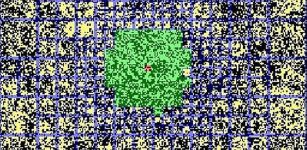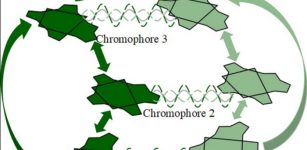Puzzling String Theory: Physicist Might Break Open Mathematical Puzzle
Eddie Gonzales Jr. – MessageToEagle.com – A University of Colorado Boulder physicist is one step closer to solving a string theory puzzle 20 years in the making.
Paul Romatschke, an associate professor of physics at CU Boulder, has devised an alternative set of tools to those that created string theory’s three-quarters dilemma, a mathematical puzzle that has plagued scientists for years and has kept them from fully understanding and proving this possible “theory of everything.”
Since the 1960s, scientists have been puzzling over string theory. Credit: University of Colorado at Boulder.
“While it would be nice to really get at the meaning of three-quarters, this is at least a very suggestive picture, so maybe that’s, if not the solution for three-quarters, at least a step towards sort of resolving it,” Romatschke said in a press release.
Since the 1960s, scientists have been puzzling over string theory, a theoretical framework of reality that involves tiny, wriggling one-dimensional objects—called strings—that make up the fabric of everything. One of its biggest breakthroughs is the discovery that black holes and matter are roughly two sides of the same coin.
This so-called “duality” allows physicists to map properties of matter (such as pressure) to properties of the black holes found in Einstein’s general relativity, which would open up string theory for even greater mathematical exploration. Since the discovery of this duality was made 20 years ago, string theorists have been trying to clear this roadblock with progressively more complicated equations.
Every time they compare this duality, though, they all get the exact same result:
The free energy (a system’s ability to do work) from a strong interaction (or coupling) of the two is roughly three-quarters the strength of a weak coupling.
Romatschke worked in a world that only has two dimensions and was able to prove a relationship exists by forcing matter (in this case, pressure) to interact from zero interaction to infinite interaction. he may finally have an answer to this puzzle—he just had to change dimensions.
The research show that the pressure of infinite coupling is exactly four-fifths of that at zero coupling, meaning that not only is there a stronger connection in this lesser dimension than what was previously found, it also may provide a standard approach to solving these types of puzzles.
Romatschke acknowledges that this may be caused by the differences in dimensions, but is still optimistic about its usefulness to quantum field theory and cracking open the long-held string theory puzzle.
According to Romatschke, this research is basic and it’s not applicable to the everyday world, but it may contribute to better understanding of important aspects of physics like string theory or quantum field theories.
Written by Eddie Gonzales Jr. – MessageToEagle.com Staff











